Americans are an accommodating people; but the public has a time limit. To maintain the voluntary cooperation of the public requires that government be transparent and reasonable in what it asks of the people.
The thirty-day grace period of the American public’s patience to put up with quarantine has expired. As Americans begin to clamor to get back to living their lives, government begins to struggle with bringing the economy and people’s quality of life back to pursuing the American Dream.
The US emergency management system is organized in a fashion where states are the primary actors in managing affairs with the federal government backing them up and attempting to maintain reasonable alignment among all of the fifty states. The federal government, under the leadership of President Donald Trump has defined the “Opening Up America Again” guidelines for a three phase reopening process, while leaving the discretion to act up to each state to pass each gating criteria test.
Some governors such a Texas’ Greg Abbott are moving swiftly through their gates. Others such as Michigan’s Gretchen Whitmer are more hesitant. In California, Governor Gavin Newsom is emulating the federal delegation by guidelines strategy passing most of the control over quarantine and re-opening issues to county level.
And so the prime movers become the fifty-four County Boards of Supervisors in the state. On Wednesday May 13, 2020, Los Angeles County Department of Health Director Barbara Ferrer issued an order moving Los Angeles County , the most populous in California, further into Phase 2 of its re-opening plan allowing more “lower risk” retail, manufacturing and logistics businesses to begin to open.
Health Departments Thrust into Public Policy.
All emergencies are a delicate balance of containing the problem at hand traded off against the social and economic damage incurred in the process. The most common expression of this is the idiom, “the cure is worse than the disease”.
The details of closing and re-opening an economy due to any crisis, whether that be due to COVID-19, a major earthquake, or some other disaster, are complex. In the case of COVID-19, as the re-opening process becomes more granular, public officials will begin to reflect the pressure of citizens to turn to county health department officials to move more aggressively down the re-opening agenda rather than extend “stay at home” quarantines.
The problem appearing for county and state government officials is that they are discovering that health departments are advocates for caution. They are no, nor is it their role, to come up with decisions when it comes to trading off the risk from a pathogen against the consequence risks of failing to taking on risk. They know how to track diseases and worry about hospital ICU surge capacity. It’s not their job to care about assessing or advising government bodies about the political or economic consequences that must be dealt with along with the COVID-19 pandemic.
Being more scientists than policy makers, public health officials tend to be more hesitant, waiting for conclusive data to plug into models, as in the case of Los Angeles County’s Barbara Ferrer, who is considering whether to maintain a “stay at home” quarantine rules affecting ten million people until September 2020, if not to the end of the year. She is waiting for COVID-19 active disease, antibody and contact tracing data to be clearer before being able to understand the direction of the quarantine.
But it’s difficult. The adage that no theory survives first contact with the enemy applies to the chaotic world of pandemic. Models pivot constantly. They become obsolete quickly if they fail to incorporate new data, factors, dependencies, pitfalls and innovations that emerge rapidly in a crisis. It’s far too easy to become paralyzed by the lack of data, or worse, being inundated with conflicting data.
The bottom line is that someone with the skill to perform a net assessment looking at everything in balance needs to emerge to advise policy makers on the trade offs they need to consider; before they make the cure worse than the disease.
This is Asymmetric Warfare
The thing a crisis is that you have to be pragmatic. Forward looking policy is the only thing that matters. As of May 13, 2020, we are beyond the acrimony of second guessing the actions we chose to take since first learning about COVID-19 in January. Every county has reacted. Every county has taken a degree of damage to its economy executing some variant what is essentially a decision to take the “ride out the attack” defense option against the threat from COVID-19.
I do get that, at the end of February, the medical advisory community basically gave decision makers across the planet this version of military campaign strategy advice, “We have no weapons to fight this threat. Our only choice is to disperse and limit the damage it causes during the initial attack. We recommend a tactical plan to buy time. Our plan is to cope and wait to get to a phase where we can begin to counterattack the threat.”
It was the best they could do in the moment; because, they were clearly panicking. In the first months of 2020, the top elites among the medical research community, the immunology and vaccine scientists, were worried that the virus SARS-CoV2 which causes the disease COVID-19 might have been one of their own laboratory animals enhanced with possibly frightening “gain of function” capabilities spliced into the phylogenic signature of the coronavirus. The possibility that a laboratory super-virus developed to study the efficacy of candidate vaccines got loose was frightening; along the lines of “Andromeda Strain” frightening. The Institute for Virology in Wuhan took over a month to search through that laboratory trying to confirm or deny that hypothesis. In the meantime, medical experts around the world, who share a crisis management philosophy to “plan for the worst”, acted on that philosophy and shut down the planet.
The issue of origin was still not resolved by the time the WHO-China Mission Report on Wuhan was issued at the end of the first and second phases of the China COVID-19 outbreak. It is still not very clear even today where exactly the phylogenic trail of mutations leads back to and who patient zero actually was. But pragmatism now dictates that is something to be looked at later with calmer nerves; after the immediate crisis is past.
Learning Curves
Since February, we have learned things about this virus. We know it is highly transmissible human to human through (1) direct proximity contact with an active carrier and (2) accidental contact with a saturated environment where the virus can linger. We also know the medical experts did not anticipate this kind of transmissibility when the virus first emerged. They were wrong.
We have confirmed that, with an R-Zero of 2.3, the thing spreads, well, like a virus. That means you can’t stop it. It also means you can slow it down using crude techniques such as quarantine; but at what cost?
To date, the western world has used a one-trick pony approach of hiding in “safe space” as the primary means of slowing the virus down. This addresses the direct proximity contact vector of transmission. It’s not the only trick to contain SARS-Cov2 used so far.
While mostly ignored in the US, the Chinese were clearly seen to be counterattacking the virus’ saturated environment linger vector of transmission. Ridiculed by a media that did not quite get what they were seeing, and alarming the intelligence and germ warfare cadre of the US who did recognize the tools of the trade, the Chinese deployed germ warfare troops and tools used for sanitizing battlefields against the virus using armies of disinfectant sprayers and checkpoints in the streets.
An interesting and pragmatic artifact of the times, the Chinese have also since ramped up the production of UV-C emitting lamps that, despite needing to be careful about glaucoma and skin cancer dangers, are known to effectively sterilize bacteria and viruses. These can be used to counterattack the saturated environment linger threat of all microscopic pathogens, not just this coronavirus. They cost about $50 bucks a bulb on Amazon. Just do not leave yourself or anything else alive in the room while it is on.
We have also certainly identified who the most at-risk groups are. We know it likes to kill people with compromised pre-existing conditions, particularly those over 65 years of age. We also know it has a penchant to attack the obese. Perversely, it also seems that smokers, who have compromised ACE2 receptors, are underrepresented in the confirmed cases population with respect to their proportion of the population.
Now I’m not advocating handing out cigars to fat people in nursing homes while they go in and out of community rooms emptied and then bathed in UV-C lighting for 15 minutes every three hours as a field expedient weapon against the coronavirus; but the point is, this is asymmetric warfare. You need to exploit the inherent weaknesses of the threat where you can and simultaneously exploit the strengths of your own forces to accomplish your total agenda, medical, economic, and quality of life, all included.
Taking Long Wars One Step at a Time
Honestly, I’m probably the only guy I know that’s actually ever written a protracted nuclear war strategy model that envisioned such a conflict lasting several years; it was kind of an arcane end of the “War Games” movie scenario set even back in the day. But my point again is, we have already gone through the initial “ride out” response to COVID-19. The deep strategy to winning in that old protracted fight wargame was all about having the ability to take stock of what you had left to fight with in the pauses between battles; then, exploit the asymmetric options better than the adversary at each iteration.
We are in a similar pickle today. It very much is the time for federal, state and county government policy to look beyond the “when in doubt, do what you know” endless cycle of repeating the same thing over and over again until you collapse, exhausted and depressed.
I’m actually quite excited at the quality of data available to assess actionable options at this pause in the battle with COVID-19. The information necessary to construct decision making models for how government can plan the next phase of the response is amazingly available in almost real-time. Sites like the Johns Hopkins Coronavirus Research Center provide detailed status the battle against SARS-CoV2 on a county-by-county basis. The display is even reminiscent of some of the Strategic Defense Initiative (SDI) architecture maps I used many moons ago, the coronavirus is sort of like a cluster bomb delivered via airliner is you think of it.
But there is the data at your fingertips, population per county, at-risk segments of the population representable by the over 65 age group within a county, the number of confirmed cases, the number of deaths. Combine this with emerging data on statistical testing of active and lingering antibody infection percentages in the population plus the science of the basic R-Zero infection rate and how both active risk mitigation and herd effects change the viability of the virus within a county that is actively adapting its battle tactics to improve medical, economic and quality of like outcomes at each phase of the struggle, and you’ve yourself the makings of a more holistic strategy to managing a pandemic than hanging solely on the word of the most timid voices in the room.
Three Basic Options
“Answer me these questions three. Ner the other side ye see.”
Public policy is about knowing the consequences of your choices. There are basically three options that a country government must demand to see with clarity each time it ponders what to do next as the world’s protracted experience with COVID-19 continues.
The Baseline Option, Return to Normal
The base option is always to ask, “What if we make the decision to relinquish emergency power and return to business as usual?” It should be a required feature in any decision model presented to a government body. It represents the restoration of full Constitutional freedom and is the legally required goal post against which all other options should be considered.
This option is not devoid of prudent actions by individuals to continue to practice good things. It’s making the decision to return the control, initiative and burden to do so from the government back to the people. It says the point has been reached where normal market and cultural controls are sufficient to tackle the problem.
Knowing what the relative advantages or detriments of this option and reasonably explaining why it either is, or is not, the time to take it is the only thing that gives context to other options. Without it, a government has no basis to make a legitimate ask of its citizens to ponder, accept or reject other courses of action.
The Shelter Option, Long-Term Quarantine
This is the “ride out the next wave” shelter in place model. It is an intrusive and debilitating option that places medical necessity above the damage being caused to economic and quality of life concerns.
Selecting such an option to implement should always require the presence of extraordinary indicators that a catastrophic collapse of the system would result this approach were not used. Its purpose is to give decision makers tangible proof that the problem is existential and cannot be dealt with by any other means.
This is a Gray Zone tactic. In warfare, it is typically reserved for stages of a conflict where there is a dearth of clarity on the nature of the threat and what defenses can be used against it. Planet earth experienced one of these “blind panic” episodes between January and May 2020.
It is not a condition one wants to linger in because you ultimately always lose the war surrendering while the threat lays merciless siege upon you.
The Hybrid Response Option
This is a policy option that uses data discovered in the last phase of an engagement to tune the strategy going forward. Its purpose is to exploit any weaknesses or strengths found that can be taken advantage of.
In the COVID-19 case, something like recognizing that altering how extraordinary protections are delivered for at-risk persons in the next phase could prevent elderly persons in nursing homes from representing 50% of fatalities; clearly something went terribly wrong there.
It also means recognizing that the is tangible gain to be had to the economy and quality of life aspects of the larger war by relinquishing unnecessary controls on non-risk persons, who are about 90% of the population. Their death rates are lower than the most at risk populace and they are also more capable, with a convincing presentation of education and awareness, of taking individual protective measures.
This hybrid is in the west as the Sweden model. It was briefly toyed with by the British before they decided to adopt the “ride out” quarantine model. So far, and the modeling results shown later bear this out, the hybrid model seems to show merit.
This hybrid response was also the recognized early on by the Chinese. They called it their “Third Stage of Response” to COVID-19 strategy. They noted some 45 days ago that once initial containment of the virus is accomplished, the pressing priority is to re-open the economy while protecting the most at-risk segments of the population; before the economy collapses and the cure becomes worse than the disease.
President Donald Trump said much the same thing by the way. He was ridiculed for it. In contrast, President Xi Xinping has become the hero of his people for championing the very same policy. Go figure.
Distributed Decision Making
The difference between the US war against COVID-19 and the Chinese one is the locus of decision and action. In China, it is done using a central government model that can dictates down the governance food chain to get to individuals in Chinese society.
That approach just does not fly in the US. Every time Donald Trump has tried to make any top down CEO-type decision, it has resulted in chaos. It is not just him, every US president that has tried to do so has hit the same wall. The US system of government is based on checks and balances.
No. The US uses a diverse bottom up model of governance which is why we, at this very moment, are discussing what decisions county board of supervisors need to do. Where the Chinese head of state can dictate, the US head of state can only create broad guidelines. The final decision is in the hands of lower levels of government; and ultimately, at the discretion of individual citizens.
What we need to do now is start to insist that there is consistency and logic in the decisions being made. What we do not want is irrational decisions that are not subject to proper vetting to get through our matrix of checks and balances.
Modeling Observations
So how so these options play out against each other in a computer model? To find out, I built one. I set it up to be able to evaluate the decision-making options on a county by county basis because that is pretty much where the forward line of troops (FLOT) is right now. Seems about right. I can plug in the parameters of any county in the country.
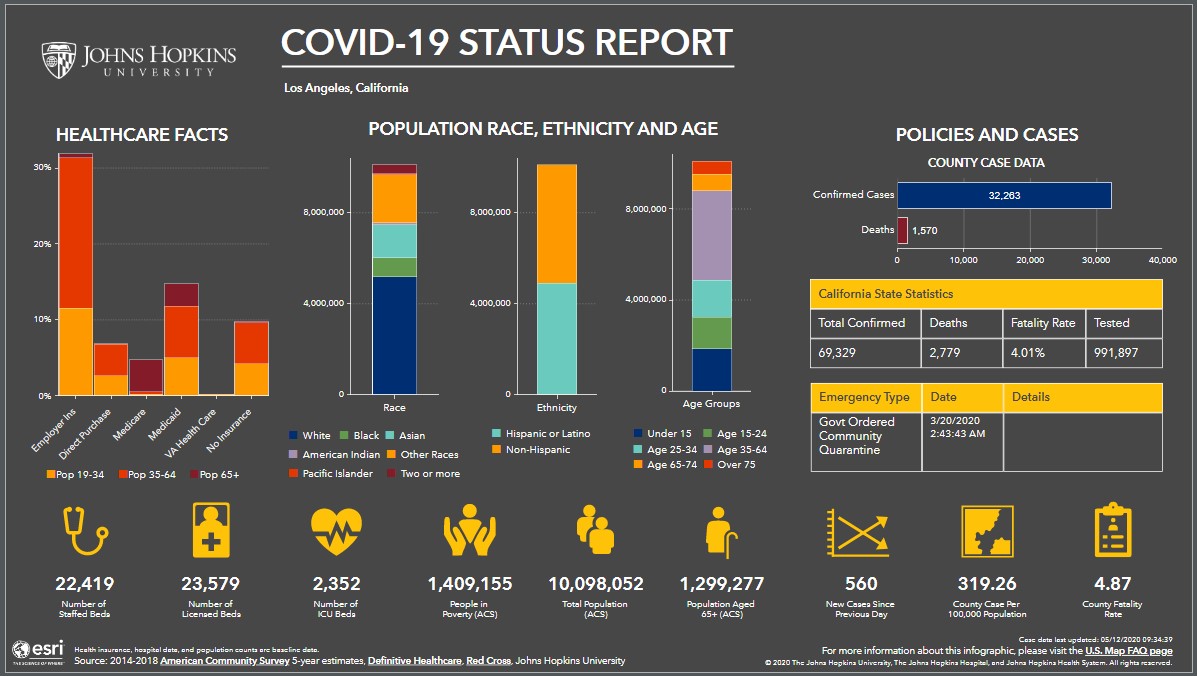
Sprawling Los Angeles is the most populous county of California’s fifty-four counties. Among it’s 10,098,052 population, 1,299,277 are over the age of 65 according to the data in the Johns Hopkins database. At the time I pulled data from the site, the confirmed case count for the region stood at 32,263 and the coroner had recorded 1,570 deaths due to COVID-19. Early infection rate testing data for California estimated somewhere around 6% of the state’s population would probably test positive for an active case of COVID-19 of either the symptomatic or asymptomatic form, or test positive for antibodies indicating the person previously encountered the SARS-CoV2 virus. The virus itself is known to have an R-Zero infection rate factor of 2.3. Research literature states that the effect of “social distancing” measures effectively reduces that factor to 1.5.
I’ll take that at face value for now even though my instinct is telling me that 1.5 divided by 2.3 coming out to 66% is kind of the default Gaussian estimation number that modelers use when they have no data to plug in; that’s code for somebody’s wild guess in a pinch. I do not think health departments have a clue what the actual transmissibility mitigation effect quarantine really has. If you believe the germ warfare people’s literature on the effects of temporary sheltering, this could be good, this could be useless. They will not really know until a larger body of contact tracing data is collected. It’s actually opaque at this time as to what, if any, aspects of social distancing works or doesn’t; or what substitute techniques are available to achieve identical threat mitigation outcomes that would create the same beneficial effects as general quarantines. For now, it is easily modeled as a parametric in a ground rule in an adaptive model. In my view, it does not by itself constitute a validated existential threat per se.
It should not stop public policy option planning. The question to the model is, how do the three policy options play out on three key questions. First, How many people die before a vaccine is expected to arrive, maybe 180 days from now? Second, what does the path to herd immunity saturation look like under each option. The third question is how does the personal risk of dying from COVID-19 look to an average citizen in that county? Basically, how morbid will this be, what about the tribe, and what about me.
Death Count Projections
Starting with an estimate that 6% of the population already tests positive for the COVID-19 virus or its antibodies, the projections of deaths over the next 180 days in Los Angeles County, barring a mutation change in the virus create stark decision points for government officials. Unconstrained, the model says total deaths could reach almost 14,000 persons out of the county’s 10 million residents. Keeping the region locked under quarantine until a vaccine appears cuts that down to around 4,000 deaths in 180 days. Using the hybrid Swedish/Chinese Stage 3 approach places the death toll at around 9,000 by the time a vaccine is expected. Governments do need to understand at this point that they are making life or death decisions. Which option would you choose?
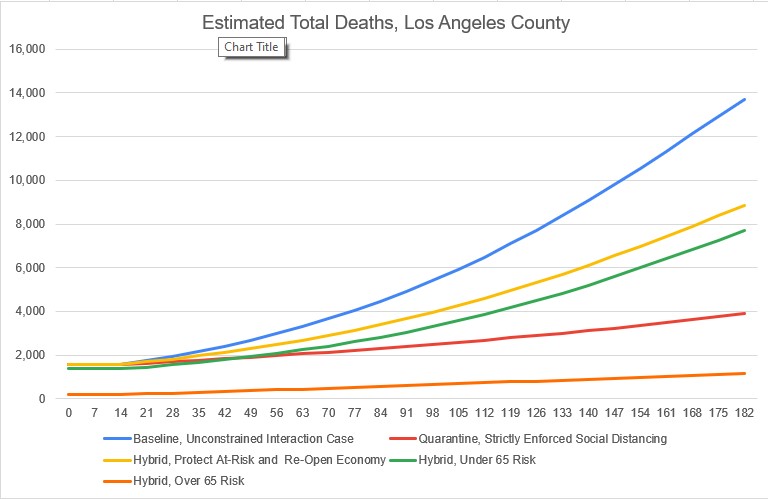
Herd Immunity Considerations
Again using starting conditions from where Los Angeles County was as of May 12th with a 6% testing positive population base, what stands out is that herd immunity looks to reach the magic 60 percent mark around the end of the year under either the fully reopen or hybrid strategy scenarios that accepts the risk of more deaths in order to keep the economy and quality of life factors up for the rest of the population. An important thing to note in these models is that, by continuing to shelter in place, Los Angeles County will never reach herd immunity benefit levels. That means if the promised vaccine does not arrive, the region will begin 2021 like a ground hog waking up to the same nightmare. Given this additional information, how does that influence your decision?
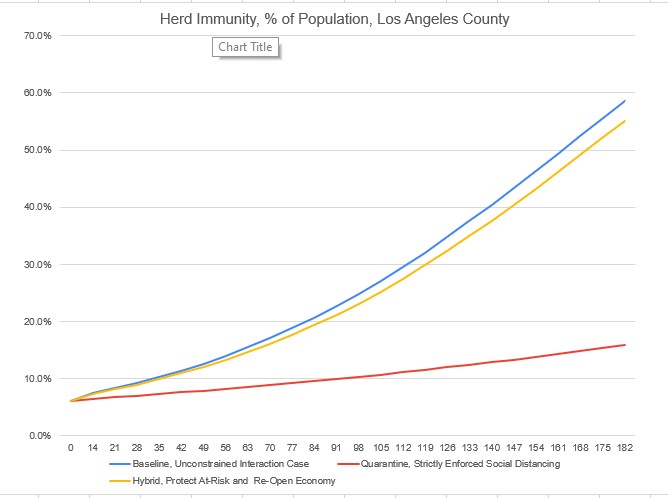
Personal Risk Considerations
According to the same option model, as of today, every person in Los Angeles County looks to be running a 1 in 6,400 risk of dying from COVID-19 based on the number of deaths to the total population of the county. In the baseline case with a 6% testing positive start, by the end of the year, depending on the public policy direction taken, residents will run risks of between low of 1 in 2,600 to a high of 1 in 730 of dying. Under the hybrid policy scenario, the total risk is around 1 in 1,000. There is a predicted risk gap between high risk and low risk persons that is taken advantage of by the differentiation in protection methods strategy. That’s an avenue of tactical exploitation that deserves looking into more.
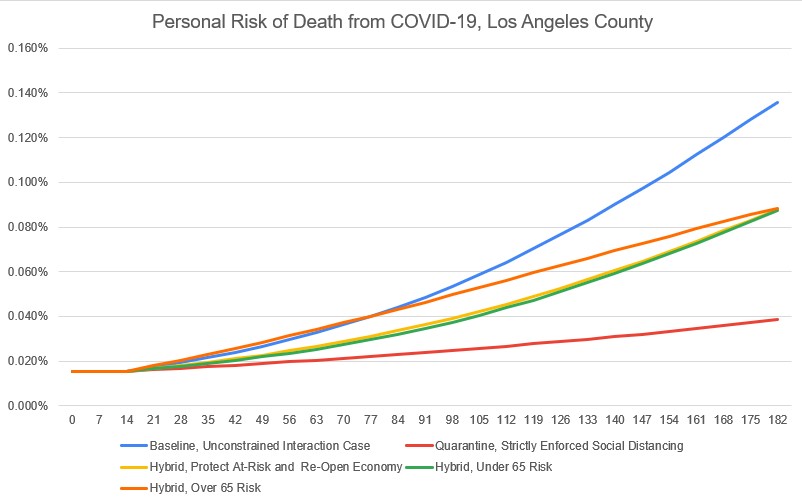
These figures of risk to the average person in the county seem, to me anyway, a much more meaningful criteria for people making individual risk decisions. The simple question for each person boils down to one of preference. We each have three choices.
- We can say we want to be as safe as possible no matter what it does to the economy or our culture and let public officials know that we them to maintain locking the county down until a vaccine arrives.
- We can say we want to live as freely as possible and tell the county that we are willing to accept more risk in the process.
- Or we can tell the county we want them to pursue Swedish/Chinese approach that will put our personal risk somewhere in between the extremes.
We, as individual citizens have a duty to make choices and make our decisions heard. Each of the counties then needs to tell their governors what they decided to do. That is what creates the new meat on the bones that a state has to work with to plan the next phase of its economic recovery. That in turn is communicated by the states to the federal government so it can assess how to allocate back up resources to take the nation forward.
Barbara Ferrer’s Data Dilemma
As I noted earlier, these epidemic models are highly susceptible to changes in ground rules and starting conditions that can lead to wild variances in total death counts. If we change to tested positive proportion of the population to another estimate noted of the press that the infected persons are only 5 times the number of confirmed cases per region, that means only 1.6% of the population would test positive. This one change to the modeling explodes the death count projection to almost 100,000 deaths by the end of the year in Los Angeles county, a difference of 86,000 deaths from the 6% of the population testing positive indication. That is way too wild a swing for making public policy.
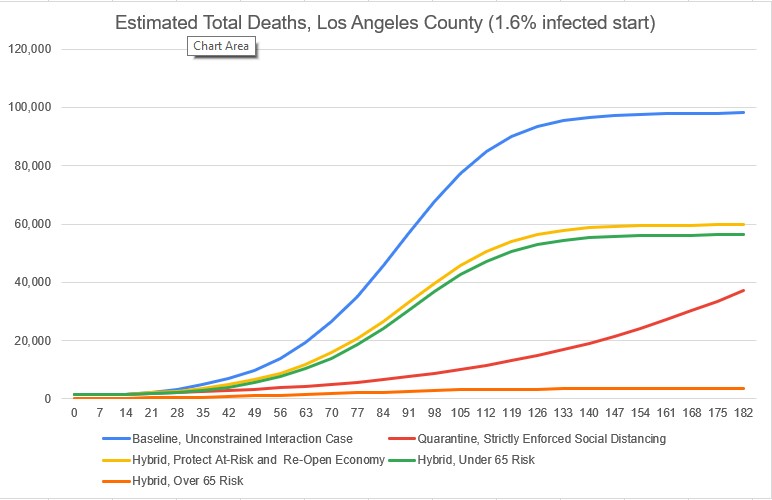
I appreciate Ferrer’s dilemma in that general population testing has not yet advanced to know if the in situ COVID-19 positive population is 6% or 1.6%. It makes a huge difference. There is worry. If the dour case manifests, 90 days from now, even under continued quarantine, we will have buried around 7,500 more people. Bear in mind, that number is about 2,500 more dead using “worst case” policy planning than what would happen if the 6% of the populace testing positive as of May 12th is the correct modeling start figure of merit. If I were the L.A. County Board of Supervisors, I would instruct Ferrer’s Department of Health continue to tighten that estimate.
The Elephant in the Room Question
How do we make the virus go away? That’s the million dollar question that hovers over the planet. Pandemics eventually burn themselves out after that have caused the damage they arose to commit. While there are indeed some twenty-two initiatives underway to identify a vaccine effective against the SARS-CoV2 virus, what if no vaccine is found? Even now, we are hearing the medical elites showing signs they may not be so sure any one of those candidate vaccines will make it through their trials.
Then, is herd immunity, or the best we can manage, all we have left? If that is so, is timidity hoping for a vaccine the right way to go? Or will taking our lumps as a species and accepting that pathogens carry out the task of natural selection are the humility we must accept as just another creature on this planet? Then, if we must run the gauntlet, is it better to do so more quickly? Does that then become a government or an individual decision?
Beyond Medical Consequences
An additional 90-day quarantine of the most populous county in California will cause irreparable to the Los Angeles region and the State of California. In terms of the destruction of industries that must leave the state to survive, the loss of swaths of small businesses and the almost 50% of the region’s jobs they represent, the cratering or abandonment of Hollywood by the entertainment industry, and others cloud the future.
The consequences will turn what was supposed to be a two week voluntary societal pause into a three year, if not to the end of the decade, depression, poverty and painful recovery process. The news that this might happen has alarmed everyone, including the L.A. County Board of Supervisors. Every incorporated city in the county, including the City of Los Angeles, is assessing how much damage this will cause.
Sacramento, taking a cue from the White House, has delegated decision making down to the county level using a guidelines and discretion approach to governance; but neither Donald Trump nor Gavin Newsom seem to have strategies to ensure that there is any quality control on how the fifty-eight counties of California, much less the 3,142 counties in America, go about making prudential public policy decisions.
Trump’s summer mandate is clearly a difficult decision making process to allocate the “back up” resources of the federal government to maintain the stability of the US economy. Meanwhile, the states writhe and lick the wounds they caused stemming from their decisions to take the “all in” batten down the hatches path or the more Swedish semi-shutdown approach to COVID-19. The battered US landscape is a mixture of both; as is the aggressiveness of the states to move quickly through gates 1, 2 and 3 of the federal re-opening strategy guidelines.
In much the same manner that President Trump faces oddball problem delegating re-opening to the states, Governor Newsom faces his share of oddball county problems; the most dramatic being the standoff between Elon Musk’s Tesla and Alameda County.
Newsom further faces a massive shortfall in his state’s ability to deliver a tax base that can support California’s government apparatus in the months ahead, a problem he will have to become pragmatic about to solve. He probably didn’t plan on being the governor who would have to sort through and disappoint entitlement programs during his tenure; but oh well, here we are. Welcome to another aspect of the “new normal”.
Modeling Notes: The computer model I assembled is capable of modeling the path options of each of the 3,142 counties for which COVID-19 data has been collected. The model can also accommodate innovations such as starts and stops of quarantines. It can add granularity to track additional segmentation of population subsets, for instances of obese persons under 65 years of age. It can incorporate innovations and technologies that affect transmissibility, viability, or mortality or the virus, such as the arrival of a vaccine or the approval of medications or devices that materially alter risk. And it can look at the differential risk effects of a county’s pattern of person proximity and density. All these are potential tools. I do intend to add a medical resources load factor indicator to the model so it will be sensitive to this and any other existential threat circuit breakers that are essential for policy and decision makers to have. As noted in the article, this is a protracted war. We will have to re-optimize based on what we’ve learned at each pause in the battle until this is done.
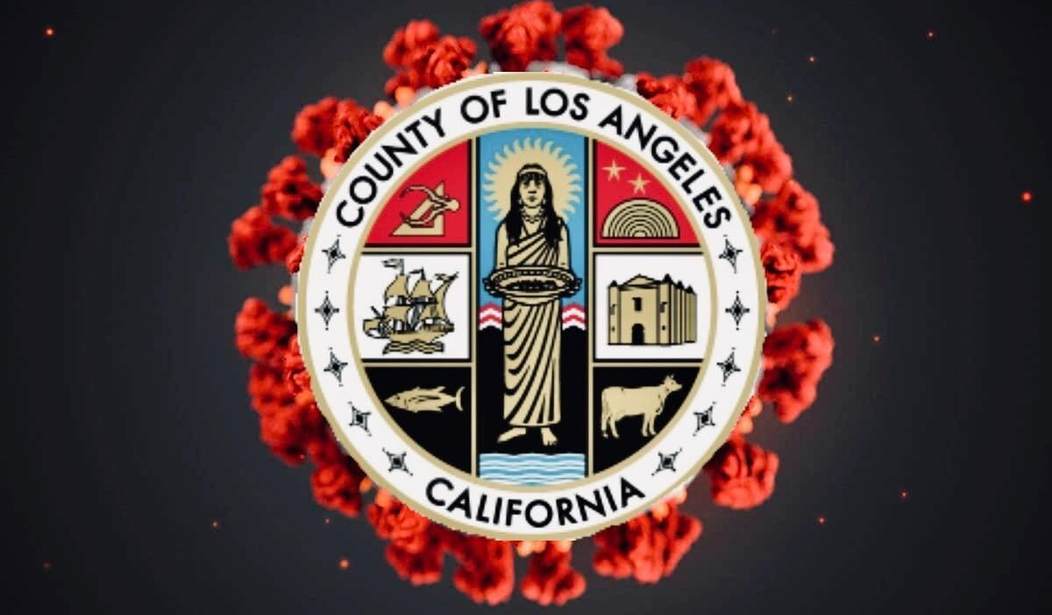
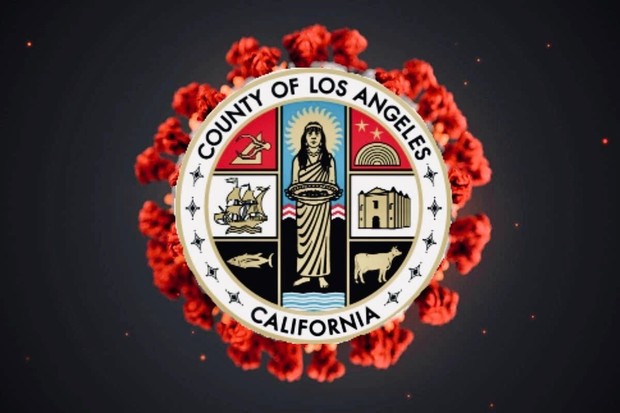












Join the conversation as a VIP Member